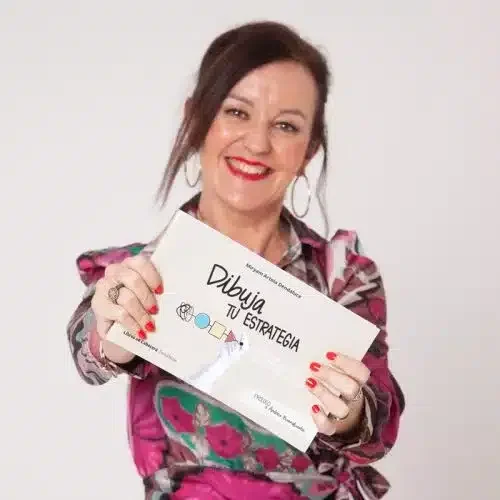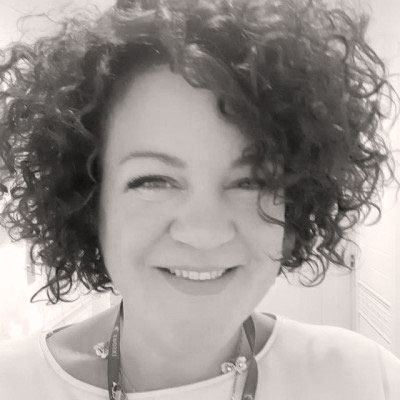If you are in a leadership position in your organisation, draw your strategy with Visual Language and improve the way you mobilise teams.
You will solve the most common problem of those who want to lead.
Those of us who exercise this role know how frustrating it can be to transmit information or strategies to be followed and not get those who should participate in them to understand them perfectly or commit to achieving the objective.
This is not surprising. We are dealing with more and more data, and it is becoming more and more abstract. And abstract data doesn’t communicate much. It is narratives that can mobilise.
Getting your narrative across and getting your organisation or team members to buy into it is one of your biggest challenges in getting the results you want, but it is very difficult to do this by writing a long, complex document.
On the other hand, if you draw your strategy using Visual Language as a tool, they will understand it the first time.
I am Miryam Artola, creator of Muxote Potolo Bat, and I have been using Visual Language in my consultancy work for more than 20 years, so that companies and teams can clarify and optimise their communication, establish realistic objectives that will help them improve their results and design the necessary strategies to achieve them, bringing all their members together in a common effort.
In this book I will share with you much of my knowledge and experience in consulting and training, so that you too can use Visual Language and become more influential, so that you can mobilise your team in the direction you want to go.

Among other things, you will learn:
- How to build a common, shared identity for your organisation and team that helps them move together towards their goals.
- How to make complex concepts simple to understand, using Visual Language, so you can share your vision.
- How to connect with the real needs of your organisation or team.
- How to recognise your differential value as a professional, and the differential value of your team.
- A new way to listen actively, to pay full attention, to understand your team.
- How to visually capture all of the above, in a medium that you and your organisation can use for a long time, as a map of who you are and what you do, to keep your goals in mind and not to deviate from the path you have set.
- 10 tips on how to conduct a visualisation session, so that you can fearlessly put into practice everything you have learned.
I want to draw my strategy
You don't need to know how to draw
If you can draw a squiggle, a circle, a square, a triangle, a line and a dot, you can use visual language.
I’ll show you how.
You don't need fancy materials either
Markers, paper and little else.
In addition, the book itself has a logbook, with a series of pages so that you can work directly on them. You can also download the logbook, in case you don’t want to work on the book or if you want to repeat the exercises.
And access to an extended experience
Inside the book you will also find a QR code that will give you access to an extended experience of the book. There you will find videos, tutorials and more additional information.
You will also have a space where you can share your own work.

What they say about Visual Language in companies and teams:

The strength of Visual Language is indisputable. It is not the same to write a strategy, a project, an idea, as it is to express it visually. It is not understood in the same way, it is not retained in the same way. I have realised that my colleagues and clients understand what they see better than what they hear. What they see rather than what they read. That's why I try to make them “see” what I mean.

Working in the people management department with the support of Visual Language is a journey of understanding and integration of concepts that are sometimes loose and that, together with a visual narrative, make us see the conceptual reality of some areas in a friendlier, less complex and closer way. It helps us to better reach the company's workers and to become more committed to the organisation's purpose.

My field of action, as Financial Director of a business group, is dry and heavy, full of indicators of a certain complexity, not very understandable for the rest of the professionals of other areas or departments. I asked myself: How do I transform this dryness into usefulness? I took part in a course given by Miryam Artola on Visual Language and discovered a new tool that was a turning point in my work. I moved away from the tedious minutes full of text and indicators that were difficult to understand and I approached my colleagues in a friendlier, simpler and, of course, more useful way.

Miry! How much you have contributed to me in these years! Both to discover, first, my own visual language, and to be able to use it to communicate with myself and then with others, and to work with different teams over the years in such diverse moments, where always, being able to connect and co-create, has been so valuable: strategic reflections, workshops, visual training in teams, celebrations, creations and project closings... thank you for so much! Communication, clarity, order and focus. That's right, let's go for 10 more
